PTSource MiniVMDOS is a evolution in the lineage of DOS operating systems for Windows x86 and x64. This modern iteration integrates transparent web and network access seamlessly into its familiar command-line interface, empowering users with unparalleled connectivity. Moreover, it introduces native support for printing text to Windows printers, streamlining document management across platforms. With robust network support, users can effortlessly collaborate and share resources in real-time, enhancing productivity and efficiency.
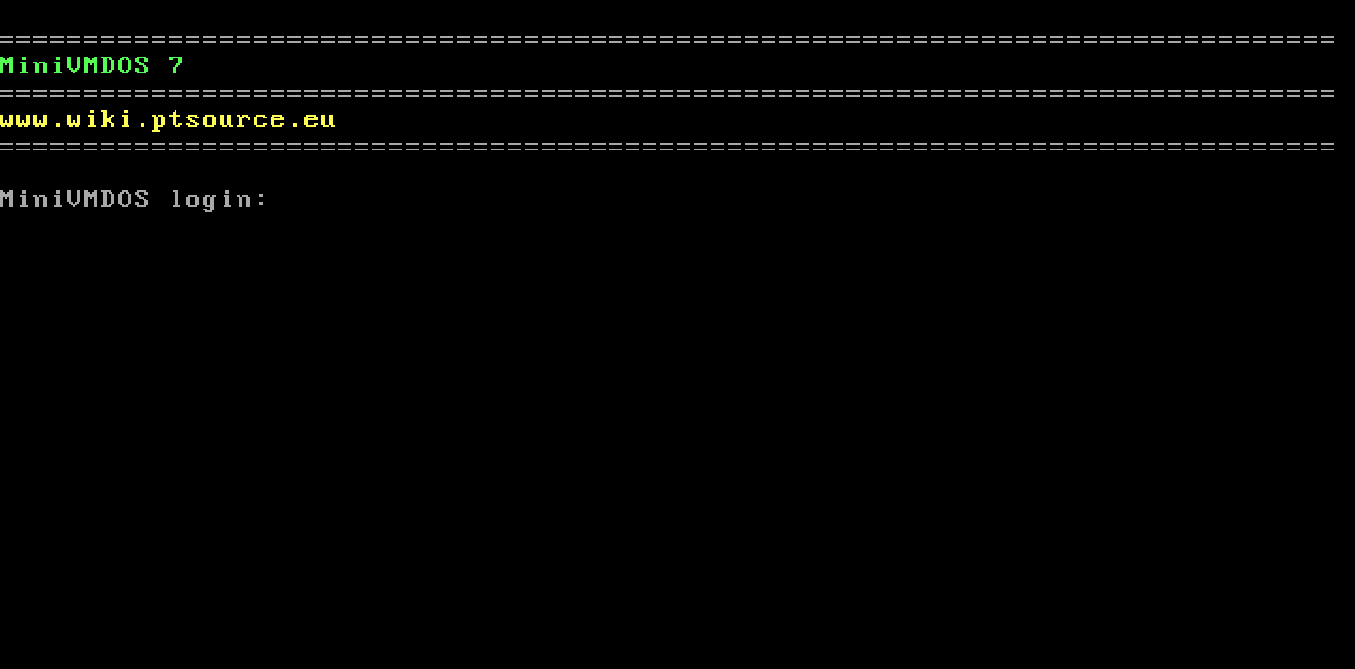
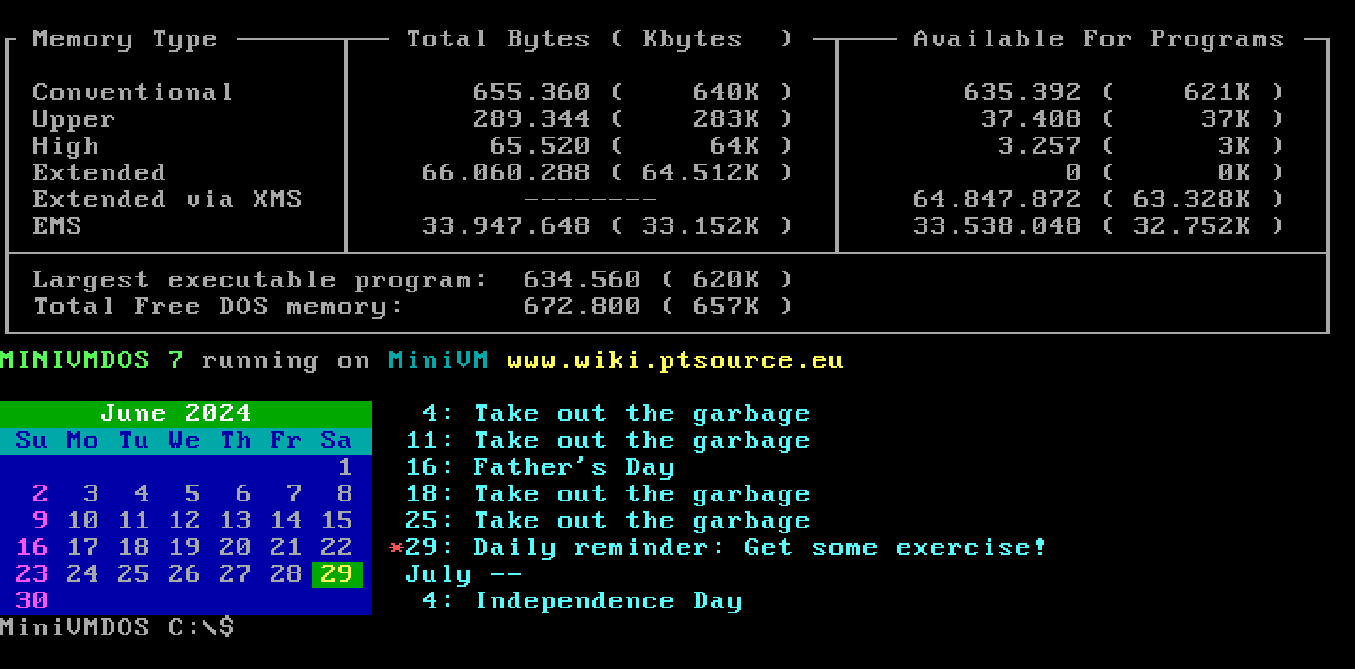
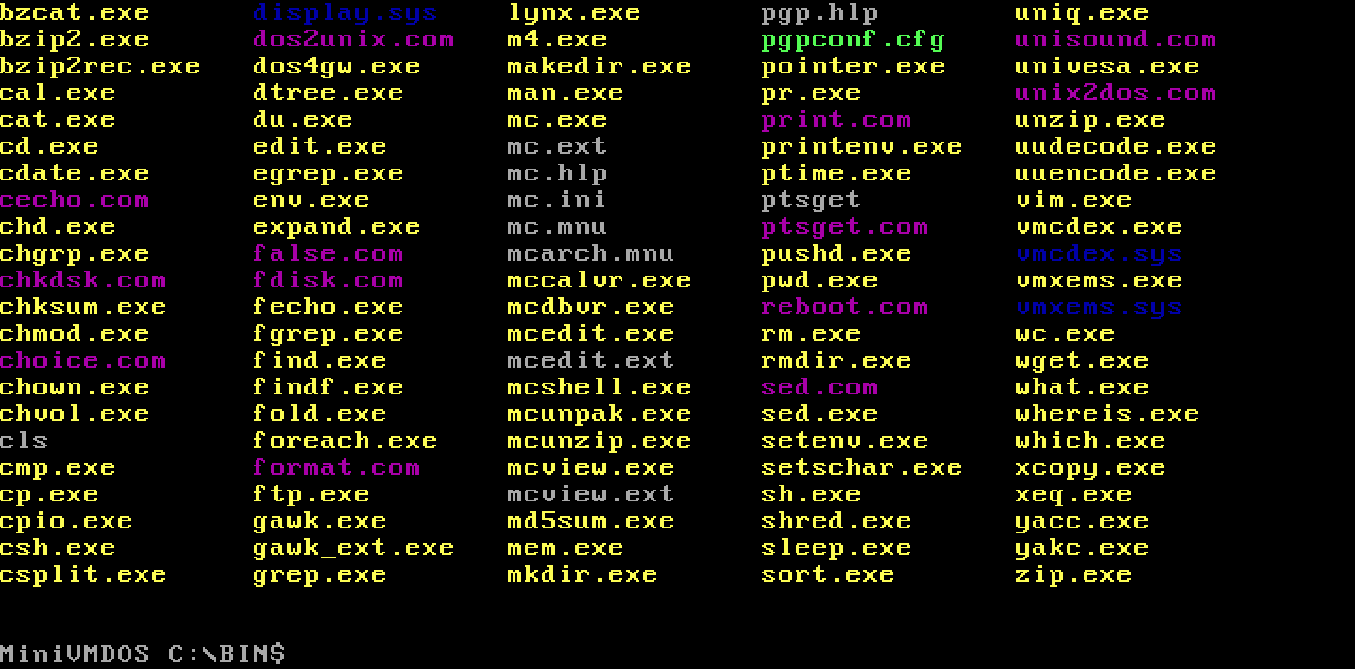
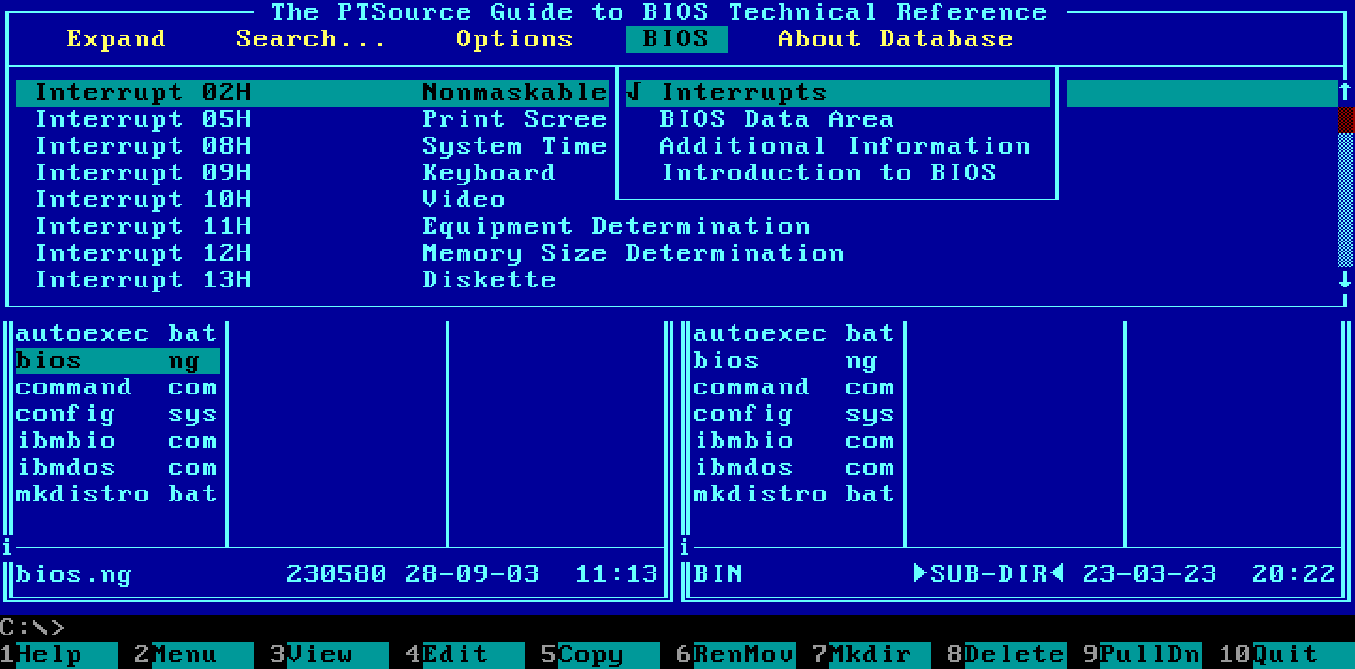
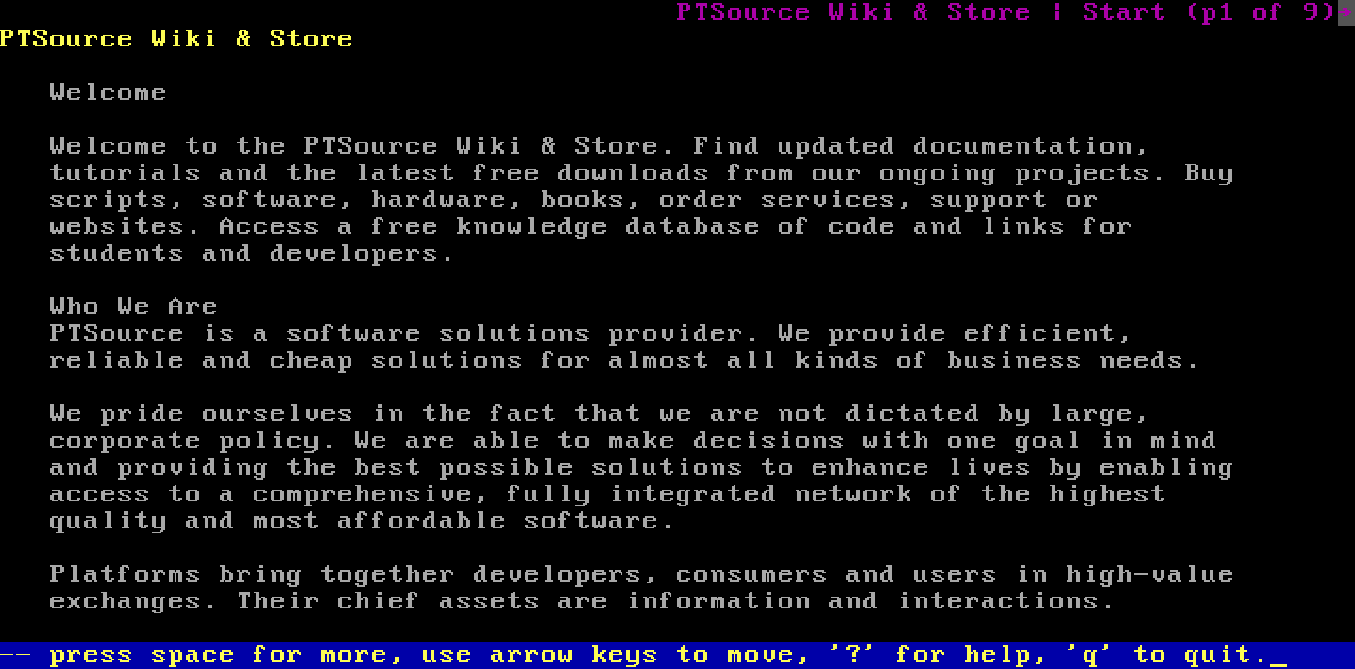
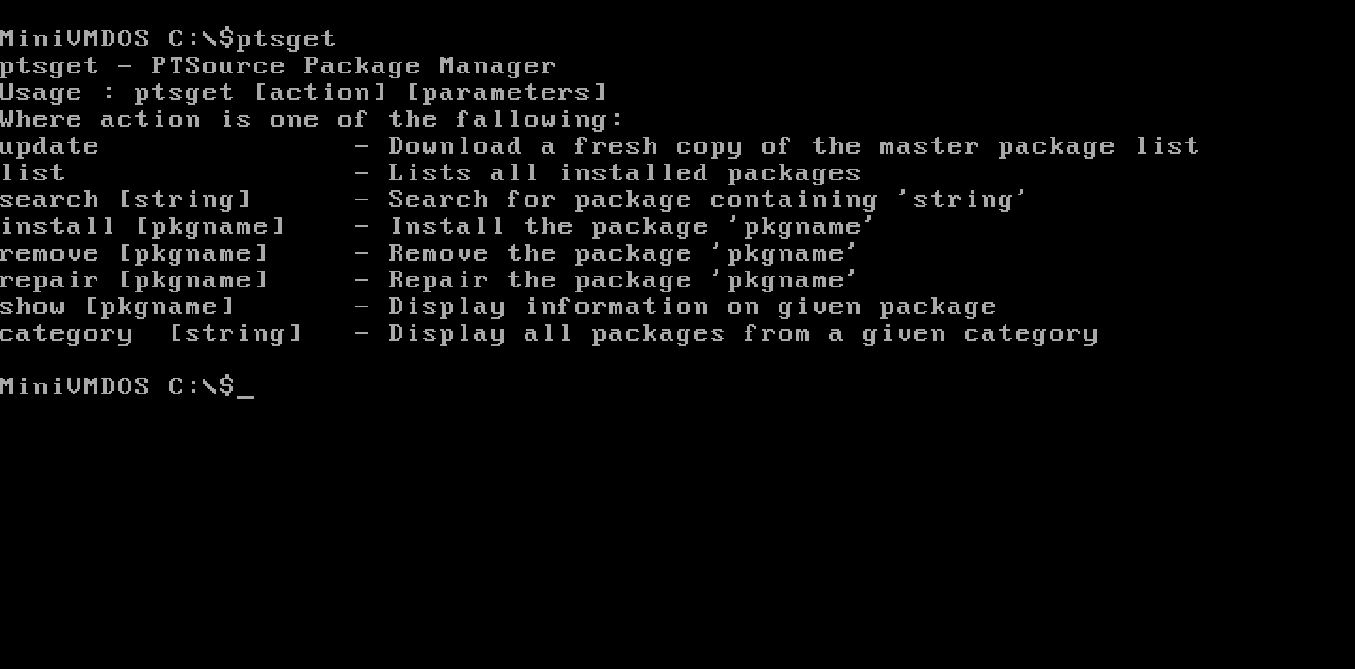
- Intel Pentium MMX Processor at 580 MHz
- 64Mb SDRAM (default) 128Mb SDRAM (using the --extramem switch)
- Serial Mouse
- Sound Blaster 16 Sound Card
- Ne2000 Network Card
- 3 Hard Drives
- 1 CDROM Drive (ISO Files)
- 2 2.88 Mb Floppy Drives (IMG, IMA, FDI Files)
- Runs contained inside PTSource MiniVM
- PTSource PTSGET package manager included
- Network support and multiuser environment
- Printing text to Windows printers
- Transparent web and network access
- PTSource Imager hard drive image creator included
- PTSource Tools Disk hard drive tools included
- PTSource Printer manager for host included
- PTSource Guides reader and compiler included
- PTSource Basic interpreter included
- PTSource XSystem included
- MiniVMDOS Commander
- MiniVMDOS Command RECALL
- MiniVMDOS Precision Pointer Mouse Driver
- DPMI support and VDM based multitasking
- UNIX and CMD style commands
- Joe and VIM Editor with CTAGS and XXD
- Python
- Bash, CSH and CMD interpreters
- Mutt email client
- PGPShell with PGP encryption
- Dialog, BBOX
- Lynx, Gopher, WGET, FTP, IRC and more…
- 100% Compatible with MS-DOS, PC-DOS, DR-DOS
- Windows 3.11 Support
Using DOS, or Disk Operating System, offers several benefits despite being an older technology. Its simplicity provides users with a straightforward interface, making it easy to learn and use, even for those unfamiliar with computing. DOS requires minimal system resources, making it lightweight and ideal for running on older hardware or in embedded systems where efficiency is paramount. Additionally, DOS facilitates direct access to hardware, allowing for greater control and customization, which is advantageous for specialized applications or troubleshooting purposes. Its reliability and stability have stood the test of time, ensuring consistent performance for basic computing tasks. Overall, DOS remains a valuable tool for certain use cases, offering efficiency, reliability, and simplicity in operation.
- Download the Installer.
- When Windows says the installer is not trusted, click “more info” and then “run anyway”.
- Follow the instructions in the installer.
- You can now launch the software from your desktop.